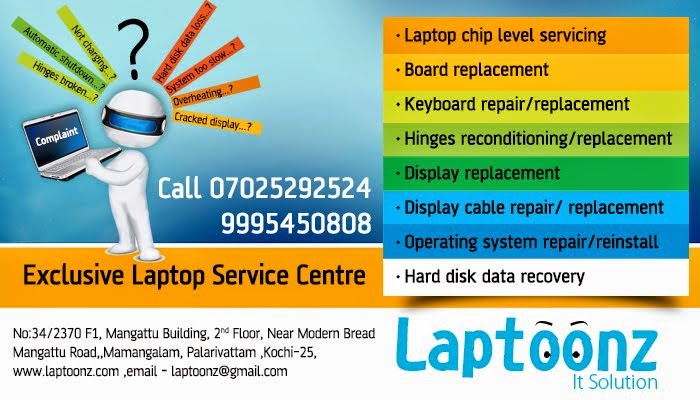Our PC's are data processors. PC's function is simple: to process data, and the processing is done electronically inside
the CPU and between the other components. That sounds simple, but what are data, and how are they processed
electronically in a PC? That is the subject of these pages.
Analog data
The signals, which we send each other to communicate, are data. Our daily data have many forms: sound, letters, numbers, and other characters (handwritten or printed), photos, graphics, film. All these data are in their nature analog, which means that they are varied in their type. In this form, they are unusable in a PC. The PC can only process concise, simple data formats. Such data can be processed very effectively.www.laptoonz.com
Digital data
The PC is an electric unit. Therefore, it can only deal with data, which are associated with electricity. That is accomplished using electric switches, which are either off or on. You can compare with regular household switches. If the switch if off, the PC reads numeral 0. If it is on, it is read as numeral one. See the illustration below: With our electric switches, we can write 0 or 1. We can now start our data processing! The PC is filled with these switches (in the form of transistors). There are literally millions of those in the electronic components. Each represents either a 0 or a 1, so we can process data with millions of 0's and 1's.
Analog data
The signals, which we send each other to communicate, are data. Our daily data have many forms: sound, letters, numbers, and other characters (handwritten or printed), photos, graphics, film. All these data are in their nature analog, which means that they are varied in their type. In this form, they are unusable in a PC. The PC can only process concise, simple data formats. Such data can be processed very effectively.www.laptoonz.com
Digital data
The PC is an electric unit. Therefore, it can only deal with data, which are associated with electricity. That is accomplished using electric switches, which are either off or on. You can compare with regular household switches. If the switch if off, the PC reads numeral 0. If it is on, it is read as numeral one. See the illustration below: With our electric switches, we can write 0 or 1. We can now start our data processing! The PC is filled with these switches (in the form of transistors). There are literally millions of those in the electronic components. Each represents either a 0 or a 1, so we can process data with millions of 0's and 1's.

